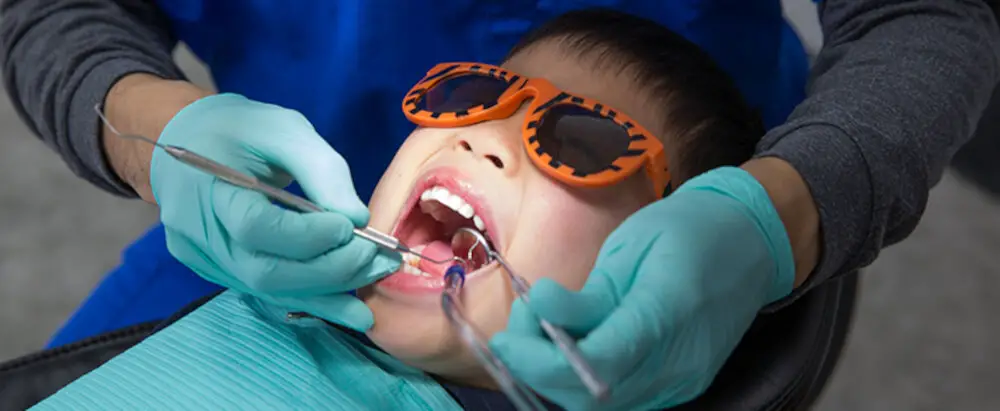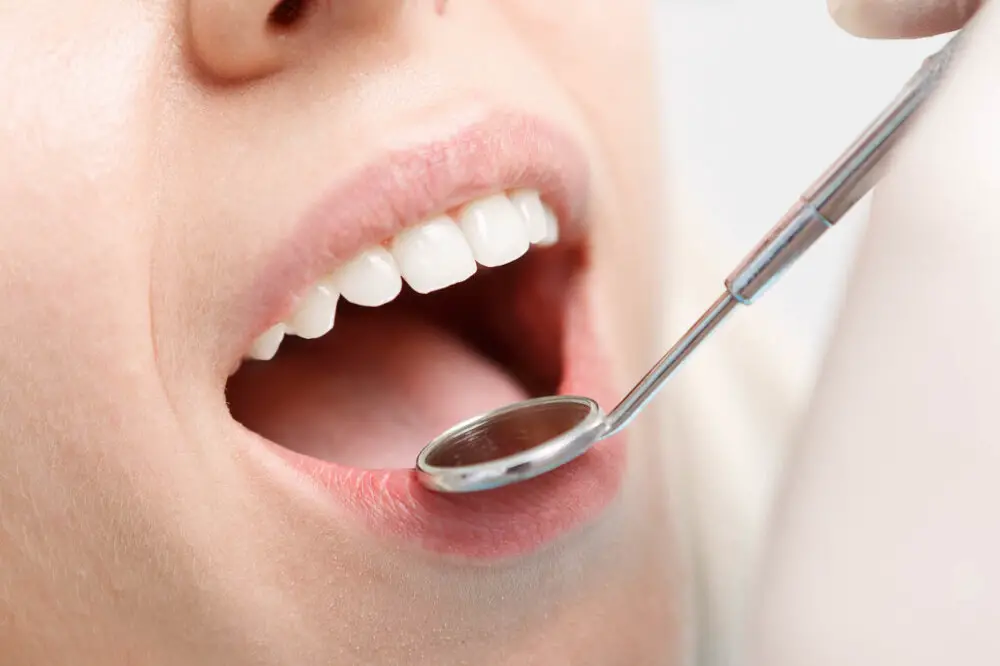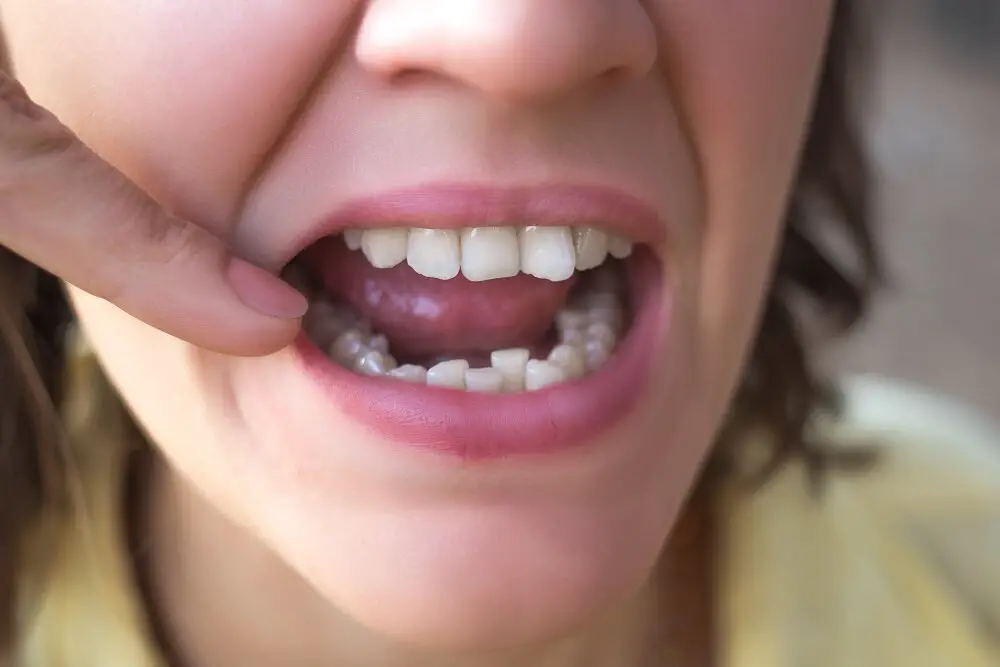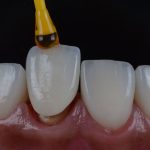Permanent Solution or Missed Opportunity? Exploring the Link Between Gum Disease and Teeth Removal

Gum disease is a common dental issue that affects millions of people worldwide. It is caused by the accumulation of bacteria and plaque on the teeth and gums, leading to inflammation, bleeding, and eventually tooth loss. While gum disease can be treated with various techniques, such as deep cleaning, antibiotics, and surgery, in some cases, teeth removal may be necessary to prevent further damage. However, the question arises whether tooth extraction is a permanent solution or a missed opportunity to save the teeth and prevent future complications. The relationship between gum disease and teeth removal is complex and multifaceted. On the one hand, removing the affected tooth can help alleviate the symptoms of gum disease and prevent the spread of infection to other teeth. Moreover, it can make it easier to clean the remaining teeth and maintain good oral hygiene. On the other hand, tooth extraction can lead to several negative consequences, such as bone loss, shifting of nearby teeth, and decreased chewing ability. Additionally, some people may experience psychological and emotional distress due to missing teeth, affecting their self-esteem and social interactions. Therefore, it is essential to explore the link between gum disease and teeth removal to determine the best course of action for each patient.
Gum disease, also known as periodontal disease, is a chronic inflammation of the gums caused by bacterial infection. It starts with plaque buildup on teeth and eventually leads to the destruction of gum tissue and bone loss. If left untreated, it can result in teeth loosening and ultimately require teeth removal. While teeth removal may seem like a permanent solution, it may actually be a missed opportunity to address the underlying issue of gum disease. Instead, treating gum disease early with proper oral hygiene practices and professional cleanings can prevent the need for teeth removal and promote long-term oral health.
Maintaining good oral health is essential not only for keeping a bright smile but also for overall health and well-being. Poor oral hygiene can lead to various dental problems such as gum disease, tooth decay, and tooth loss, as well as contribute to other health issues such as heart disease, respiratory infections, and diabetes. Regular brushing, flossing, and dental check-ups are essential for preventing gum disease and ensuring early detection and treatment. Neglecting oral health can lead to irreversible damage, and in some cases, teeth removal may be necessary, which can have long-term consequences on one’s quality of life. Therefore, it is crucial to prioritize oral health and seek professional advice whenever necessary.
Understanding Gum Disease

Gum disease, also known as periodontal disease, is a common chronic inflammatory condition that affects the tissues surrounding and supporting the teeth. It is caused by the buildup of bacteria in the mouth, which leads to the formation of plaque and tartar on the teeth and gums. Over time, the bacteria can cause the gums to become inflamed and infected, leading to gum recession, tooth loss, and other serious dental problems. Gum disease can be mild, moderate, or severe, and its symptoms can range from redness and swelling of the gums to bleeding, bad breath, and loose teeth. It is important to understand the causes, symptoms, and risks of gum disease in order to prevent it from developing or progressing. Some risk factors for gum disease include poor oral hygiene, smoking, stress, genetics, and certain medical conditions such as diabetes and autoimmune disorders. Regular dental checkups, professional cleaning, and proper brushing and flossing can help prevent and manage gum disease. If left untreated, gum disease can lead to tooth loss and other serious health problems, such as heart disease, stroke, and respiratory infections. Therefore, it is important to seek prompt treatment for gum disease to maintain good oral and overall health.
Gum disease, also known as periodontal disease, is caused by the buildup of plaque and bacteria on the teeth and gums. Plaque is a sticky film of bacteria that constantly forms on the teeth and can harden into tartar if not removed by regular brushing and flossing. The bacteria in plaque and tartar can cause inflammation and infection in the gums, leading to symptoms such as redness, swelling, tenderness, and bleeding. As the disease progresses, it can cause the gums to pull away from the teeth, creating pockets where more bacteria can accumulate and eventually leading to tooth loss if left untreated. Other symptoms of gum disease can include bad breath, receding gums, loose teeth, and changes in the way teeth fit together when biting or chewing.
Gum disease, also known as periodontal disease, is a common oral health condition that affects the gums and supporting tissues around the teeth. There are two main types of gum disease: gingivitis and periodontitis. Gingivitis is the milder form of gum disease that causes inflammation and bleeding of the gums. If left untreated, it can progress to periodontitis, a more severe form of gum disease. Periodontitis affects not only the gums but also the ligaments and bones that support the teeth. This can lead to tooth loss if the condition is not treated promptly. Other types of gum disease include aggressive periodontitis, chronic periodontitis, and necrotizing periodontal disease. Understanding the type of gum disease is crucial to determining the appropriate treatment plan.
Gum disease, also known as periodontal disease, is a prevalent condition that affects the tissues surrounding and supporting the teeth. When left untreated, it can lead to tooth loss, and teeth removal may become necessary. The link between gum disease and teeth removal is rooted in the fact that the disease causes the deterioration of the bone and gum tissue that hold the teeth in place, leading to tooth mobility and ultimately, tooth loss. While teeth removal may seem like a permanent solution, it is important to consider the missed opportunity to address the underlying issue of gum disease. Treating gum disease early on with proper oral hygiene and regular dental checkups can help prevent the need for teeth removal and preserve the natural teeth for a lifetime.
Teeth Removal: Necessary or Preventable?

The decision to remove one or more teeth is often a difficult one, and it is important to consider all options before making a final decision. While teeth removal may be necessary in certain cases, such as severe decay or gum disease, it is not always the only solution. There are preventive measures that can be taken to ensure that teeth remain healthy and strong, including regular dental checkups, proper oral hygiene, and a healthy diet. By taking these steps, it may be possible to avoid the need for teeth removal altogether. However, in some cases, teeth removal may be the only viable solution to prevent further damage or alleviate persistent pain. For example, wisdom teeth often need to be removed to prevent overcrowding and other issues. Additionally, teeth that have been severely damaged by decay or trauma may need to be extracted to prevent infection and further complications. Ultimately, the decision to remove teeth should be made on a case-by-case basis, taking into account the patient’s overall oral health and individual circumstances. By working closely with a qualified dentist or oral surgeon, patients can make an informed decision about whether teeth removal is necessary or preventable.
Tooth removal, also known as dental extraction, is a common procedure that is performed for various reasons. One of the most common reasons for tooth removal is severe gum disease, which can cause tooth decay and bone loss. When gum disease is left untreated, it can cause a tooth to become loose and eventually fall out. In some cases, removing the tooth is the best option to prevent further damage to the surrounding teeth and bone. Other reasons for tooth removal may include overcrowding, impacted wisdom teeth, or teeth that are severely damaged or infected. However, it is important to note that tooth removal should always be a last resort and that preventative measures such as regular dental check-ups and proper oral hygiene can help prevent the need for tooth extraction.
Teeth removal may not be the only solution to treat gum disease. There are several alternatives available that can help preserve the natural teeth. Scaling and root planing is a non-surgical procedure that involves removing the tartar and bacteria from the gum pockets. Another option is laser therapy, where a laser is used to remove infected tissue and stimulate the growth of healthy tissue. In some cases, antibiotics can be prescribed to treat the infection. However, prevention is always better than cure, and maintaining good oral hygiene practices, such as regular brushing and flossing, can help prevent gum disease from occurring in the first place. Ultimately, it is important to discuss the various treatment options available with a trusted dental professional to determine the best course of action for individual cases.
The decision to remove teeth as a solution to gum disease can have significant consequences. While it may provide immediate relief from pain and infection, it can lead to long-term problems such as changes in facial structure, difficulty chewing, and speech impairment. Additionally, removing teeth can cause adjacent teeth to shift and create gaps that may be difficult to fill. This can result in further dental problems and possibly the need for additional tooth removal. Patients who undergo tooth removal may also experience emotional and social consequences, such as embarrassment or self-consciousness about their appearance. It is crucial for individuals to carefully consider all options and potential consequences before making a decision about tooth removal as a solution to gum disease.
Treating Gum Disease to Avoid Teeth Removal

Gum disease is a common oral health problem that affects millions of people worldwide. If left untreated, it can lead to tooth loss, which can be a devastating experience for patients. However, there are ways to treat gum disease and avoid teeth removal. The first step is to visit a dental professional for a comprehensive oral exam. This will help identify any signs of gum disease and determine the appropriate treatment plan. There are several treatment options available, including deep cleaning, scaling and root planing, antibiotics, and surgery in severe cases. Deep cleaning, also known as scaling and root planing, is a non-surgical procedure that removes plaque and tartar from the teeth and gums. This procedure is often recommended for patients with mild to moderate gum disease. Antibiotics can also be prescribed to help fight infection and reduce inflammation. In more severe cases, surgery may be necessary to remove damaged tissue and restore oral health. With proper treatment and care, gum disease can be managed, and teeth removal can be avoided. It is essential to maintain good oral hygiene practices, such as brushing twice a day and flossing regularly, to prevent the recurrence of gum disease.
Preventing gum disease involves maintaining proper oral hygiene practices such as brushing twice a day, flossing daily, and using an antiseptic mouthwash. Regular dental check-ups are also essential for early detection and treatment of gum disease. In addition, quitting smoking and consuming a healthy diet can reduce the risk of gum disease. If gum disease is detected, treatment options can include non-surgical cleaning procedures, antibiotics, and surgery in severe cases. It is important to address gum disease promptly to prevent further damage to the teeth and gums, which can ultimately lead to tooth loss. By taking preventative measures and seeking early treatment, individuals can maintain optimal oral health and avoid the need for teeth removal.
Maintaining proper oral hygiene is crucial for preventing gum diseases, tooth decay, and other dental problems. Brushing and flossing your teeth regularly can help remove plaque and bacteria that can lead to gum inflammation and decay. In addition, using mouthwash can help kill bacteria and freshen breath. Neglecting oral hygiene can lead to gum disease, which can ultimately result in tooth loss. Regular dental check-ups and cleanings can help identify and treat any potential issues before they become severe. Overall, taking care of your teeth and gums is essential for maintaining good oral health and preventing the need for teeth removal in the future.
Professional treatments for gum disease can vary depending on the severity of the condition. Mild gum disease can often be treated with a deep cleaning called scaling and root planing, which removes plaque and tartar buildup from the teeth and gums. More advanced cases may require surgery to remove infected tissue and restructure the gums. Gum grafts may also be necessary to cover exposed roots and prevent further damage. In some cases, antibiotics may be prescribed to treat infection. It’s important to seek professional treatment for gum disease to prevent it from progressing and potentially leading to tooth loss.
The Importance of Seeking Professional Help

Gum disease is a common dental problem that affects millions of people worldwide. It occurs when the gums become swollen, red, and bleed easily, leading to tooth loss if left untreated. Unfortunately, many people ignore the early signs of gum disease and only seek professional help when the condition has already advanced. This can result in irreversible damage to the teeth and gums, making it necessary to remove the affected teeth. Therefore, seeking professional help early on is crucial to prevent the progression of gum disease and its associated complications. Professional help for gum disease can come in various forms, such as regular dental checkups, cleanings, and treatments. Dentists can detect gum disease in its early stages and provide preventive measures to stop it from progressing. They can also provide treatments such as scaling and root planing, which remove bacteria and plaque from the teeth and gums. In severe cases, dentists may recommend gum surgery to restore the health of the gums and prevent tooth loss. Seeking professional help for gum disease is not only beneficial for the health of your teeth and gums but also for your overall well-being. It can boost your self-confidence, improve your oral hygiene habits, and prevent future dental problems.
It is essential to see a dentist or periodontist when you notice any symptoms of gum disease, such as bleeding gums, bad breath, or receding gums. Regular dental check-ups can help detect gum disease early on, preventing it from progressing to a more severe form. If gum disease has already advanced, a periodontist can provide specialized treatment, including deep cleaning, scaling, and root planing, to remove bacteria and plaque build-up. In some cases, gum disease may cause irreversible damage, and teeth removal may be necessary. However, it is crucial to explore all treatment options with your dentist or periodontist before making such a decision.
The benefits of early intervention cannot be overstated when it comes to gum disease and teeth removal. Catching gum disease in its early stages can prevent the need for tooth extraction, which can be painful and expensive. Early intervention can also help to prevent the spread of infection and inflammation to other parts of the body. By addressing the underlying causes of gum disease, such as poor oral hygiene or underlying health conditions, early intervention can help to prevent the need for more invasive treatments down the line. In addition, early intervention can help to improve overall oral health and prevent other complications, such as tooth decay and bad breath. So if you suspect that you may have gum disease, don’t wait – seek treatment from a qualified dental professional as soon as possible.
Ignoring gum disease can lead to serious consequences for your oral health and overall well-being. Gum disease is an infection that affects the tissues surrounding and supporting your teeth. If left untreated, it can progress to more serious stages, causing irreversible damage to your teeth, gums, and jawbone. In addition to tooth loss and gum recession, gum disease has been linked to a variety of health issues, including heart disease, stroke, and diabetes. Despite the potential risks, many people continue to overlook the signs of gum disease, such as bleeding gums, bad breath, and tooth sensitivity. By taking proactive steps to prevent and treat gum disease, you can avoid the need for teeth removal and enjoy a lifetime of healthy teeth and gums.
Gum disease, also known as periodontitis, is a common dental problem that affects the gums and supporting structures of the teeth. If left untreated, gum disease can lead to tooth loss, as the gums and bone tissue become damaged and unable to support the teeth. In some cases, teeth removal may be necessary to prevent the spread of infection and further damage to the surrounding tissues. While tooth extraction can be an effective solution for advanced cases of gum disease, it is important to address the underlying issue of poor oral hygiene and seek preventative care to avoid the need for future extractions. By practicing good oral hygiene habits and seeking regular dental check-ups, individuals can protect their teeth and gums from the damaging effects of gum disease and avoid the need for teeth removal.
Gum disease is a common dental problem that affects millions of people worldwide. If left untreated, it can lead to severe oral health issues, including the removal of teeth. Gum disease is caused by the buildup of plaque and bacteria on the teeth and gums, which can cause inflammation and infection. Preventing and treating gum disease is crucial in maintaining healthy teeth and preventing the need for teeth removal. Regular dental checkups, proper oral hygiene, and a healthy diet can help prevent gum disease. Treatment options for gum disease include professional cleanings, scaling and root planing, and surgery in severe cases. By taking proactive steps to prevent and treat gum disease, individuals can avoid the need for teeth removal and maintain their oral health for years to come.
Professional dental care plays a crucial role in maintaining oral health, as it provides preventative measures to avoid gum disease and tooth decay. Regular dental checkups and cleanings help detect any potential problems early on, allowing for prompt treatment before they worsen. Dental professionals are also equipped with the necessary tools and knowledge to perform deep cleanings, root canals, and other procedures to address advanced cases of gum disease. Neglecting professional care can lead to the need for tooth removal, which can be a missed opportunity to preserve the natural teeth and avoid the long-term consequences of tooth loss. Therefore, it is imperative to prioritize regular dental visits to maintain optimal oral health and prevent the need for more invasive procedures in the future.
Conclusion

In conclusion, the decision to remove teeth as a permanent solution for gum disease should not be taken lightly. While it may seem like a quick fix, it could potentially be a missed opportunity to address the root cause of the disease and save the natural teeth. It is important to explore all possible treatment options, including improved oral hygiene, gum disease therapy, and surgical interventions before considering extraction. The link between gum disease and teeth removal is complex and should be approached with caution, taking into consideration the individual’s unique circumstances and needs. Ultimately, seeking the advice of a qualified dental professional is crucial in making an informed decision and achieving optimal oral health.







